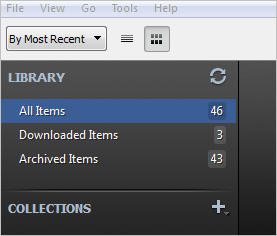How To Force Calculation In Excel For Mac
Re: Force Excel to stop calculating If it is calculating from some action other than clicking save you can hit the Escape 'Esc' key to force it to stop. You can also turn off auto-calculate in the formulas tab calculation section (to the far right). Hi - I'm Dave Bruns, and I run Exceljet with my wife, Lisa. Our goal is to help you work faster in Excel. We create short videos, and clear examples of formulas, functions, pivot tables, conditional formatting, and charts.
Excel for Office 365 Excel for Office 365 for Mac Excel 2019 Excel 2016 Excel 2019 for Mac Excel 2013 Excel 2010 Excel 2007 Excel 2016 for Mac Excel for Mac 2011 Excel Online Excel for iPad Excel Web App Excel for iPhone Excel for Android tablets Excel for Android phones Excel for Windows Phone 10 Excel Mobile Operators specify the type of calculation that you want to perform on elements in a formula—such as addition, subtraction, multiplication, or division. In this article, you'll learn the default order in which operators act upon the elements in a calculation.
You'll also learn that how to change this order by using parentheses. Types of operators There are four different types of calculation operators: arithmetic, comparison, text concatenation, and reference. Combine ranges of cells for calculations with these operators. Reference operator Meaning Example: (colon) Range operator, which produces one reference to all the cells between two references, including the two references.
B5:B15, (comma) Union operator, which combines multiple references into one reference. SUM(B5:B15,D5:D15) (space) Intersection operator, which produces on reference to cells common to the two references. B7:D7 C6:C8 The order in which Excel performs operations in formulas In some cases, the order in which calculation is performed can affect the return value of the formula, so it's important to understand the order— and how you can change the order to obtain the results you expect to see. If you combine several operators in a single formula, Excel performs the operations in the order shown in the following table. If a formula contains operators with the same precedence — for example, if a formula contains both a multiplication and division operator — Excel evaluates the operators from left to right.
 There’s also a way to get the newer versions of Kindle for PC and Mac to download AZW files instead of KFX. It works with versions 1.19 and 1.20.
There’s also a way to get the newer versions of Kindle for PC and Mac to download AZW files instead of KFX. It works with versions 1.19 and 1.20.
Samsung program for macbook. Seagate is bringing an open approach to Intelligent Information Infrastructure, applying our experience working with cloud service providers worldwide to help all organisations manage next-generation workloads - with the scale, performance, and cost aligned to customer business needs. Our truly open approach to data management supports open source and software-defined solutions.
Operator Description: (colon) (single space), (comma) Reference operators – Negation (as in –1)% Percent ^ Exponentiation * and / Multiplication and division + and – Addition and subtraction & Connects two strings of text (concatenation) = = Comparison. To change the order of evaluation, enclose in parentheses the part of the formula to be calculated first. For example, the following formula results in the value of 11, because Excel calculates multiplication before addition.
The formula first multiplies 2 by 3, and then adds 5 to the result. =5+2*3 By contrast, if you use parentheses to change the syntax, Excel adds 5 and 2 together and then multiplies the result by 3 to produce 21. =(5+2)*3 In the example below, the parentheses that enclose the first part of the formula will force Excel to calculate B4+25 first, and then divide the result by the sum of the values in cells D5, E5, and F5. =(B4+25)/SUM(D5:F5) Watch this video on to learn more. How Excel converts values in formulas When you enter a formula, Excel expects specific types of values for each operator.

If you enter a different kind of value than is expected, Excel may convert the value. The formula Produces Explanation = '1'+'2' 3 When you use a plus sign (+), Excel expects numbers in the formula. Even though the quotation marks mean that '1' and '2' are text values, Excel automatically converts the text values to numbers. = 1+'$4.00' 5 When a formula expects a number, Excel converts text if it is in a format that would usually be accepted for a number. = '6/1/2001'-'5/1/2001' 31 Excel interprets the text as a date in the mm/dd/yyyy format, converts the dates to serial numbers, and then calculates the difference between them.
=SQRT ('8+1') #VALUE! Excel cannot convert the text to a number because the text '8+1' cannot be converted to a number. You can use '9' or '8'+'1' instead of '8+1' to convert the text to a number and return the result of 3. = 'A'&TRUE ATRUE When text is expected, Excel converts numbers and logical values such as TRUE and FALSE to text. Do you have a specific function question? Help us improve Excel Do you have suggestions about how we can improve the next version of Excel?